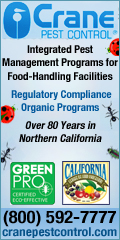
| Archives/Subscribe | www.clfp.com | Contact Us | August 5, 2014 |
OEHHA Grants Extension to Comment on new Hot Spots Guidelines
On June 20, 2014, the Office of Environmental Health Hazard Assessment (OEHHA) released a draft document, Air Toxics Hot Spots Program Guidance Manual for the Preparation of Risk Assessments (Guidance Manual) for a 45-day public comment period, originally scheduled to end on August 4, 2014. CLFP joined with other members of the industrial and business community in asking CalEPA Secretary Matt Rodriquez to extend the comment period beyond the August 4 closing date for comments.
On Tuesday, July 28, 2014, OEHHA announced the extension of the comment period to August 18, 2014. The draft Guidance Manual has been developed by OEHHA, in conjunction with the Air Resources Board, for use in implementing the Air Toxics Hot Spots Program (Health and Safety Code Section 44360 et. seq.). OEHHA is required to develop guidelines for conducting health risk assessments under Section 44360(b)(2).
The draft OEHHA Guidance Manual makes adjustments based on new research examining childhood exposures and sensitivity to air toxics. According to OEHHA, the research shows that early-life exposures to air toxics may contribute to an increased lifetime risk of developing cancer or other adverse health effects. OEHHA is seeking comments primarily on clarity of the guidance manual as it relates to implementing and integrating the risk assessment guidelines presented in three OEHHA Technical Support Documents (TSDs). They are not seeking comments on the underlying scientific information that originally appeared in the TSDs, those already having undergone public and peer review, and final approval by the Scientific Review Panel, prior to adoption by OEHHA.
However, companies should note that these draft guidelines will significantly impact local and state air toxics program, as well as the way project proponents perform environmental analyses of projects, specifically, the Air Toxic Hot Spots Assessment and Risk Reduction Programs (AB 2588) as well as the Toxics New Source Review Permitting and CEQA Project Review.
Per the California Air Pollution Officers Association (CAPCOA), the changes will result in an increase in Hot Spots health risks of 1.5 to 3 times the current estimates. This means that facilities that historically were exempt from Hot Spots risk assessment requirements could be pulled into state and local programs; either based on existing emissions or as a result of air toxics new source review requirements. As a result, affected facilities may be required to develop risk reduction plans and implement new measures to reduce off-site air toxics risk.
Additionally, the new guidelines will likely compel local air districts to issue warnings to affected facilities and residents, despite there being no change in actual emissions. Such action will definitely trigger negative attention from the surrounding community. Industry should expect the new assessments to have the potential to impact permitting, industrial expansion and possibly force reduction in operations.
Article written by John Larrea, Government Affairs Director, California League of Food Processors |
|
| CALIFORNIA LEAGUE OF FOOD PROCESSORS 2485 Natomas Park Dr., Suite 550 Sacramento, CA 95833 Phone: (916) 640-8150 Fax: (916) 640-8156 www.clfp.com |
 |

